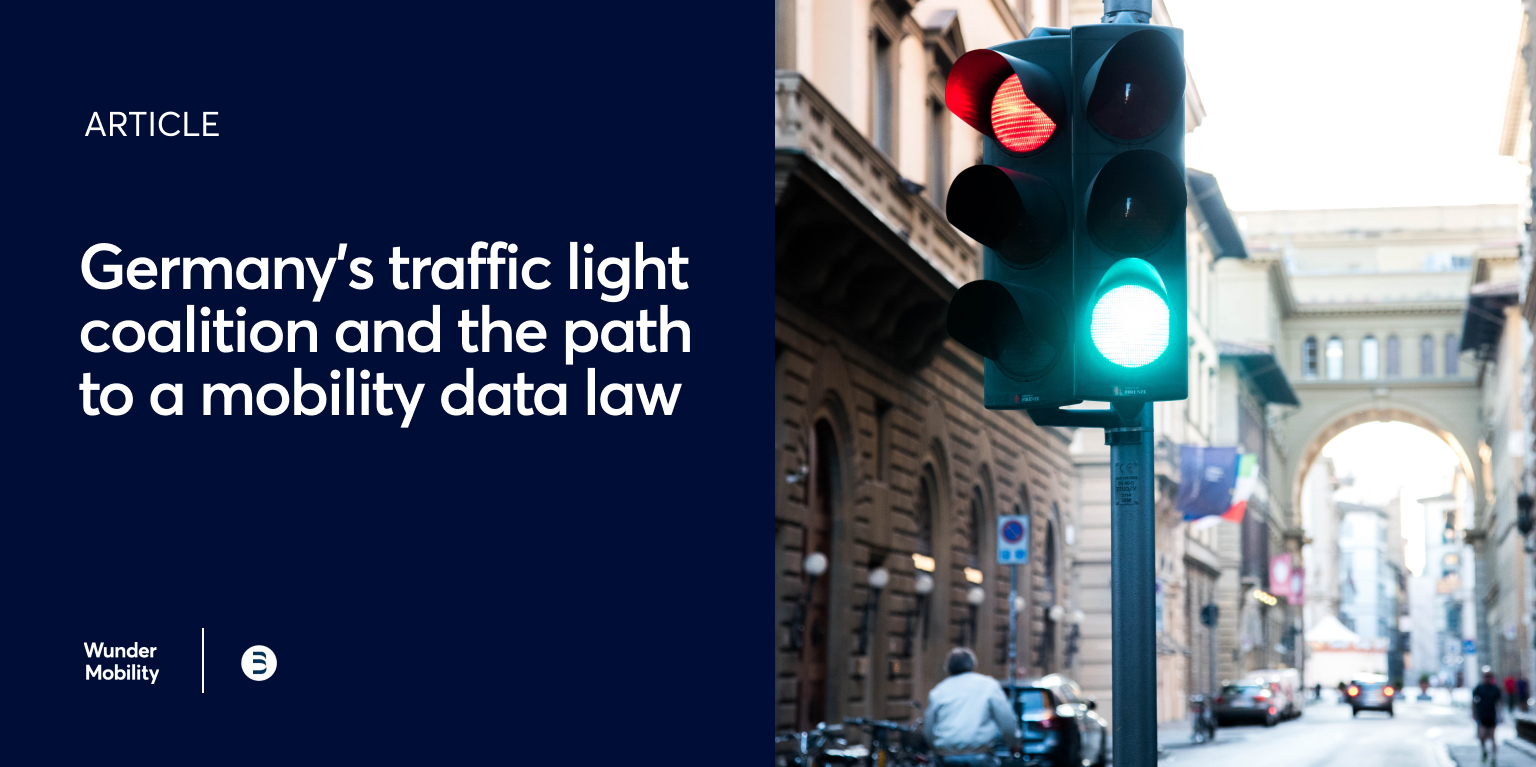Read this article in German.
In their coalition agreement from 2021, the German traffic light coalition announced that they would create “a mobility data law and ensure free accessibility to traffic data.” The idea of such a law has been on the political agenda for many mobility leaders for some time. After all, data abounds in the transportation sector: whether it be from the routes taken by e-scooters in cities, traffic jams, construction sites, or on long-distance roads, or the journeys taken on trains and buses. Mobility data is being generated all the time either by automated vehicles or by sensors at traffic lights and many believe that we should be able to share and leverage this data more easily.
What should a mobility data law regulate?
A new law on the sharing and use of mobility data should enable players in the mobility landscape to do one thing above all: coordinate the use of this data and use it to make mobility services more efficient.
Because just as there are many different sources of data, there are also just as many ways to use it. Municipal city and traffic planners can take the data into account when planning new projects, the traffic situation can be analyzed more precisely, both on an ad hoc basis and in the long term, and regulations for increasing traffic safety can be monitored more easily.
A mobility data law could provide clarity on who is required to share data, while setting standards that make data sharing straightforward and uniform. What will be exciting, however, are the questions of where this data will be pooled and who will have access to it. Will this data be held within state authorities or put into the hands of private companies?
An initial approach to bringing structure to the sea of data was the Mobility Data Ordinance, which was first adopted in October 2021. This was based on the Passenger Transportation Act, which was also amended in 2021. So why is there a need for another law for sharing data mobility?
For one thing, the ordinance only obligates companies to share data within the parameters of the Passenger Transportation Act and, accordingly, only refers to data that primarily comes from local public transportation, and occasional transportation. On the other hand, however, a regulation can only create stability and depth within a limited framework. It can therefore be revised without much parliamentary effort and relaxed or tightened accordingly. This is not without controversy, particularly in view of the sensitivity of data. An indication of just how serious this issue is can be seen from the fact that, there is already a draft for the second amendment to the Mobility Data Ordinance within just six months of the original ordinance being enacted.
What does the path towards a possible mobility data law look like?
The current Mobility Data Ordinance is to be supplemented by a law from the current traffic light coalition. But, even though the Mobility Data Act was announced in the coalition agreement, there is no concrete timetable yet. However, we can assume that it will take around six to nine months for the law to be passed after an initial draft bill - depending on how much the participating parties agree on the key issues.
The new ministry, in which digital and transport are even more closely aligned than before, is predestined to develop this law. It is to be expected that the project will be worked on by Frank Krüger’s subdivision that is responsible for data policy, before the transport policy spokespersons take over the lead for their parliamentary groups in the Bundestag. A hearing in committee, at which associations, companies and other stakeholders can present their views to members of parliament, should also be scheduled for the second half of the legislative process.
Companies and organizations that could be affected by a new mobility data law should therefore enter into an exchange with decision-makers in the executive and legislative branches at an early stage. After all, the goal of such a law is to tie together the individual data use initiatives from recent years to create stability and continuity. Accordingly, once the law is in place, it will no longer be possible to change it so quickly.
Stay tuned to see how this data mobility law develops.Want to know more about the future of mobility and the policies that will affect it? Check out our blog and follow us on LinkedIn for updates.
